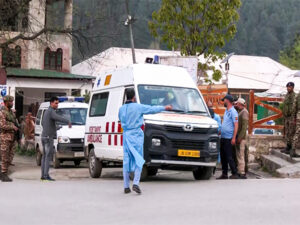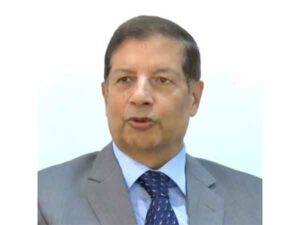Gujarat’s Dang: Model for Natural Farming in India
Dang (Gujarat) [India], October 4 (ANI): The picturesque forest region of Dang, made history in 2021 as it was declared a fully natural farming district in Gujarat under the ‘Aapnu Dang, Prakrutik Dang’ campaign. With government support and training, farmers in Dang have embraced natural farming practices, leading to significant improvements in their livelihoods.
Yashwantbhai Sahare, a farmer from village Bhurapani, is among the successful farmers from Dang, who understood the harmful effects of chemical fertilisers and, with the support of the agriculture department, took steadfast training in Gujarat and other states in the nuances of natural farming, animal husbandry and how to produce natural fertilisers.
This has helped him make innovative changes and reap benefits as he grows crops, including rice, ragi or finger millet, jackfruit, black lentil and soya bean on his farms. He also trains farmers in the district with regular camps organised by the agriculture department.
“This is reality… we understand that diseases are due to chemical fertilisers. That is why for the next generation, we have ended up using these harmful fertilisers. We only do natural farming. I took training in Subhash Palekar Natural Farming Methods; the techniques include how to make the lands fertile again. I took the training myself,” said Sahare.
Sanjay Bhagariya, Deputy Director of Agriculture, Dang District, said they have appointed master trainer farmers, who further spread their knowledge through different training programmes. This has helped farmers stay updated about innovative techniques and welfare schemes.
Bhagariya said, “In the year 2023-24, we have done 423 cluster-based training programs. We have trained nearly 16,000 farmers in that. We have continued the same initiative this year as well. In the year 2024-25, we have conducted more than 285 cluster-based training programs and so far trained around 9,020 farmers.”
The farmers in Dang are also reaping the rewards of farm mechanisation schemes. They are assisted by Gram Sevaks to apply for subsidies on tractors, rotavators, threshers and shredders through an online portal.
Sitarambhai Chaurya, a farmer in Ahwa, said the government’s subsidy schemes encouraged him to buy a tractor and rotavator. His daughter-in-law, Kusum, who holds a Master’s degree, is also involved in the family occupation of farming and engages in training programs. She says the modern agricultural equipment has saved both time and costs.
“People here live in poverty conditions. It is difficult to buy equipment on our own. When the government helps us, we can buy them and use them for farming. From the government’s Agriculture Department in Dang District, we got a subsidy on tractors. It was Rs 45,000. We also received 42,000 rupees for the rotavator. We got a subsidy so after buying the equipment, we are working and we are earning good,” said Kusum.
The success of natural farming and farm mechanisation in Dang is a testament to the government’s efforts to empower farmers and promote sustainable agriculture. As the district continues to lead the way in natural farming, it serves as a model for other regions across India.






